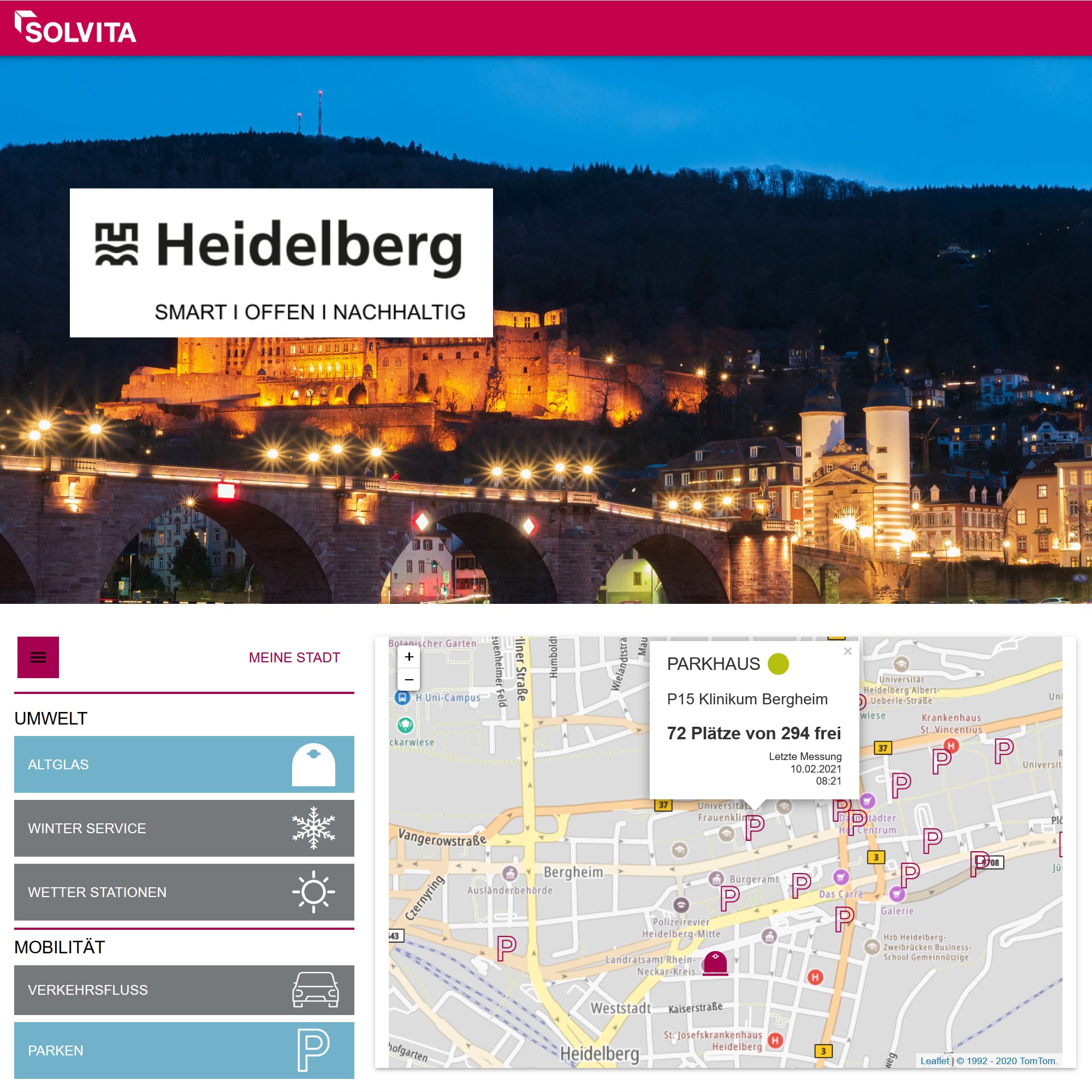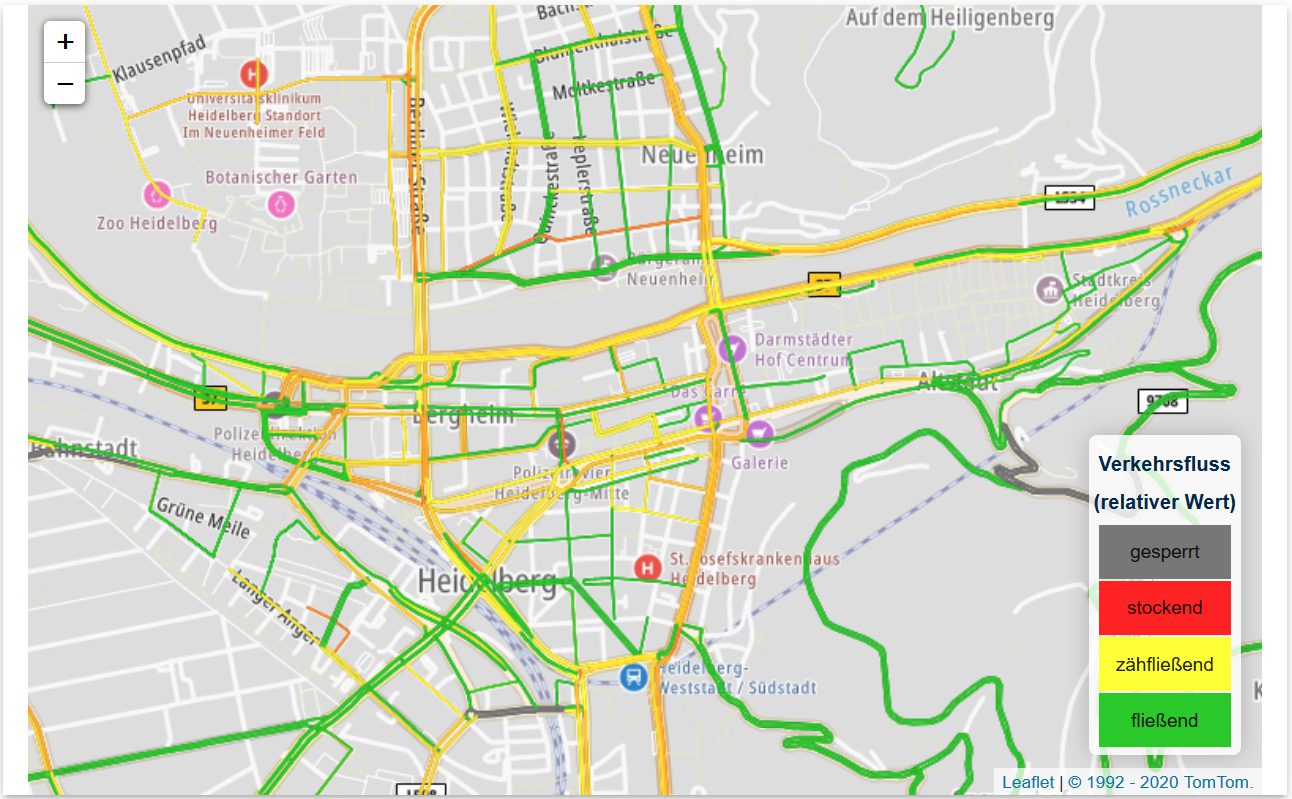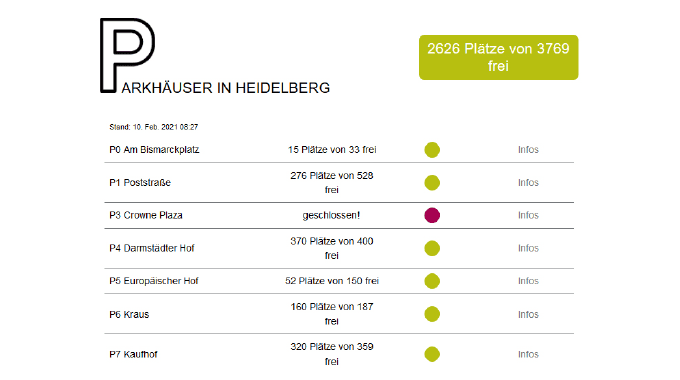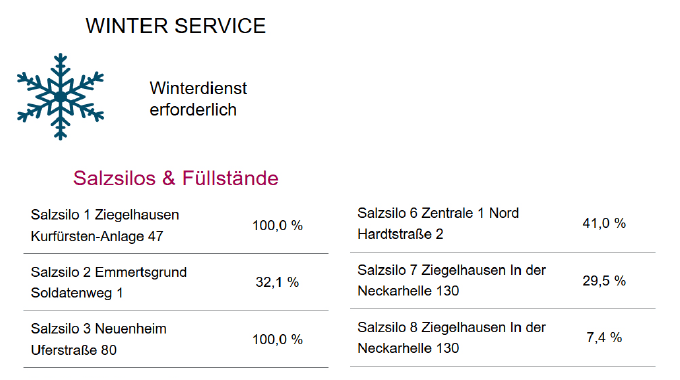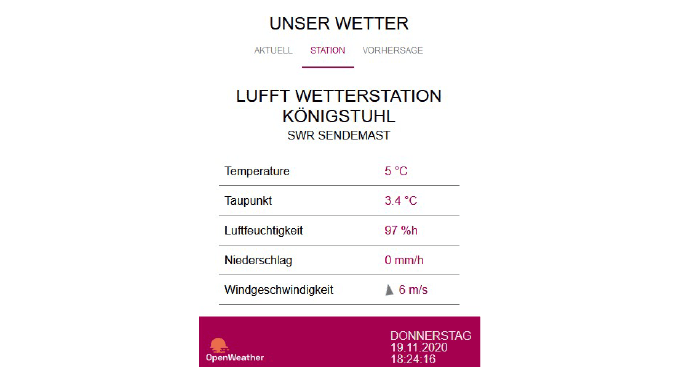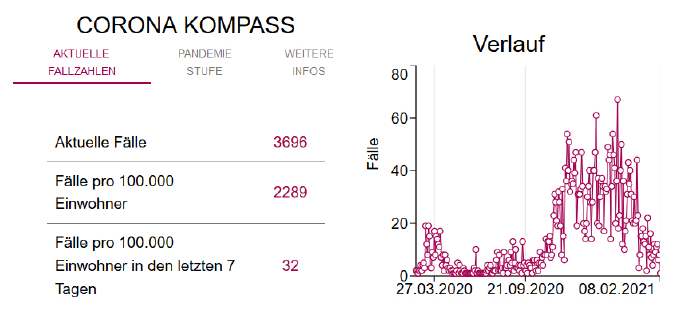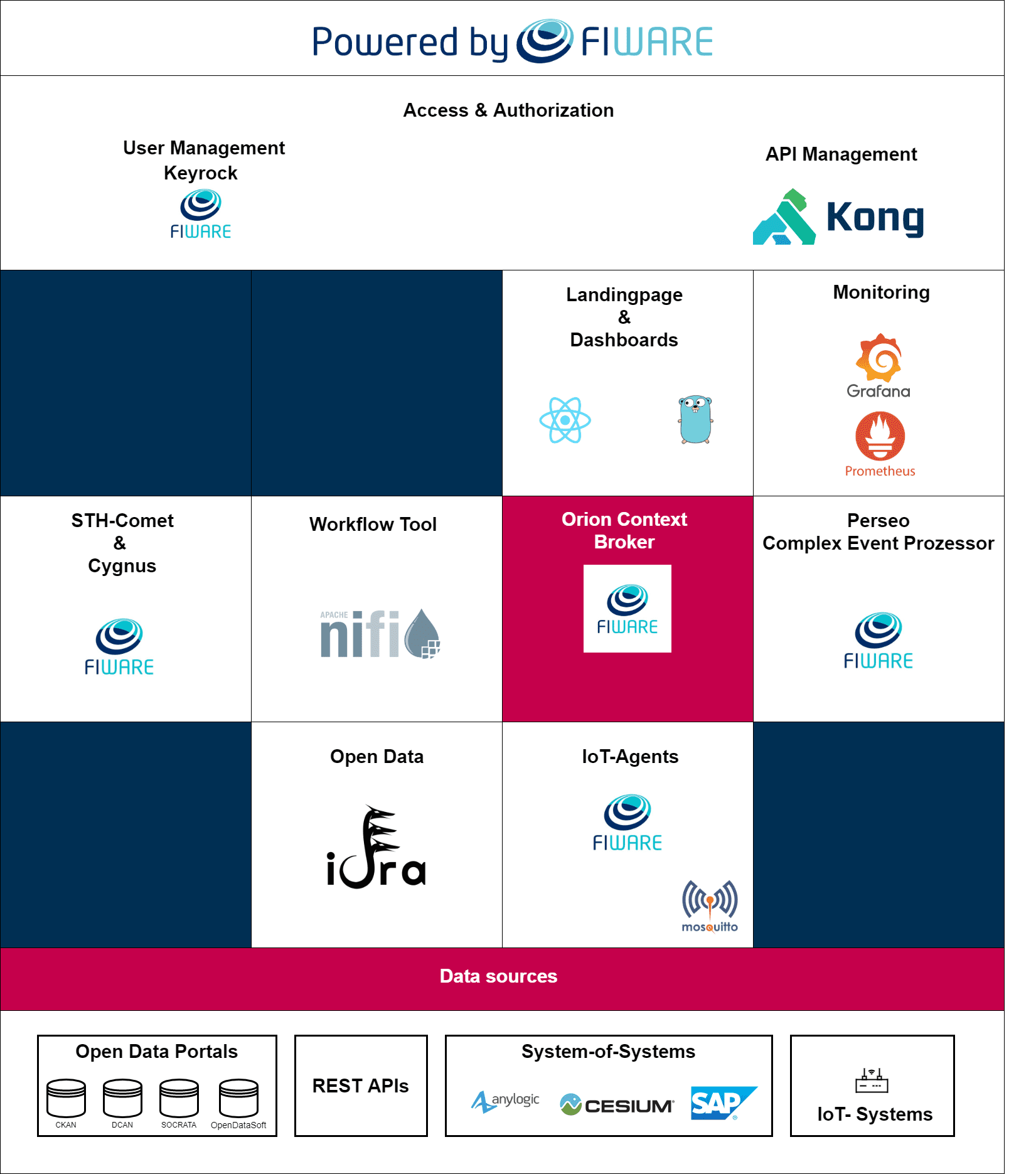Challenge & Context
With a population of around 160,000 citizens, the city of Heidelberg is the fifth largest city in Baden-Württemberg (Germany). Amid the Rhine-Neckar metropolitan region, the city on the river Neckar is considered one of the most liveable cities in Germany due to its cultural charm, favourable climatic conditions, and urban flair. In addition to its tourist attractions, such as the old town and the castle ruins, the city is known for its venerable university dating back to the 14th century, as well as for many other universities and internationally renowned research institutions.
Nevertheless, there are challenges for the city of science and culture, especially in the areas of environment, mobility, and tourism. For example, the topological location of the city on the Neckar River, with its different locations of educational & research institutions, a high commuter rate of working people as well as the pronounced tourism, creates a diverse mobility volume.
For the modern and digitally shaped city, this means also dealing intensively with digital solutions to maintain and further promote the common good as well as the high quality of life.
Heidelberg is guided by the Sustainable Development Goals (SDG) of the United Nations as the referred basis for sustainable urban development. The city’s goal is to be open to innovative digital solutions and to actively incorporate them into sustainable urban development. In doing so, these do not serve as an end in themselves, but should accompany the citizens providing them a tool for everyday life.
The city, which has been in the top 10 of the Bitkom Smart City Index twice in a row and is an active member of the OASC (Open Agile Smart City) network, already offers numerous initiatives and digital solutions in the public space. These include, among others, a comprehensive LoRaWAN network as well as the corresponding sensor technology in the environment and utilities’ area.
To promote the digital development of the city, the Digital-Agentur Heidelberg was founded in June 2017 as the municipal company supported in equal parts by the city and the municipal utilities. The Digital-Agentur (or “Digital Agency”) tasks focus on the conceptual design, initial construction and establishment of modern information and communication platforms. In doing so, the Digital Agency pursues the goal of developing sustainable, intelligent, and digital urban development in the context of the urban ecosystem consisting of research, industry, small and medium-sized businesses, and stakeholders in Heidelberg. This is implemented in close cooperation with the Office for “Digital Affairs and Information Processing” of the City of Heidelberg.
Manfred Leutz, Head of the Office for Digital Affairs and Information Processing in Heidelberg, describes his expectations of future solutions for citizens as follows:
“The fast-moving change towards more digital citizen services
of the city needs appropriate procedures and operational concepts
to ensure the sovereign and secure handling of new data in type, variety and volume.”
To make the existing systems and information usable for further digital developments as well as to increase the transparency of the activities, the Digital-Agentur Heidelberg and Engineering DSS GmbH started a cooperation.
Solution
Central web portal
A key requirement was to make the information from the different systems available to the user in one central location. This requirement was realised through a web portal, which provides the space for dashboards, interactive maps and for further information. In addition, the dashboard was adapted to the corporate design of the city of Heidelberg.
Figure 1 . Dashboard
Solution
Figure 1, for example, shows how data statuses are mapped as point-of-interest on the map by means of menu selection, displaying the corresponding information such as the number of available parking spaces or the filling levels of smart waste containers. This portal is optimised for viewing on the web as well as for mobile devices and provides the data in real time.
Digital mobility
Mobility is one of the main issues in almost every city when it comes to sustainability, environmental protection, and quality of life. For this specific initiative, the priority was given to two use cases: Traffic Flow and Smart Parking.
Figure 2 . Traffic Map
Traffic Flow
The first use case refers to the traffic volume in the city (Figure 2). The user can display this via a selection on the interactive map in the web portal. A colour gradation of the traffic flow provides the necessary information, so that users can adapt their movement to the current traffic situation. For this case, we use an open API from the navigation service provider TOMTOM.
Smart Parking
In the second use case, the information on the current occupancy status of the parking garages in Heidelberg was transferred to the FIWARE platform. Here, the user sees the locations of the car parks on the interactive map (shown in Figure 1) and can find out the occupancy status of individual car parks and view addresses and other information about the car parks.
Figure 3 . Car Park Data
In addition, an overview of all car parks and their occupancy statuses are available in the dashboard area, as shown in Figure 3. In this case, the FIWARE platform was also used to calculate the total value of available parking spaces in all car parks.
Users thus have the possibility to plan their car journey within the city in a targeted manner. For the implementation, an interface to the Heidelberg parking system was created using FIWARE followed by the harmonization of the data using FIWARE data models.
Sustainable environmental initiatives
The field of action of environment and sustainability offers many possibilities for implementations in a city. Heidelberg has already successfully launched its first digital projects in this area. For our initiative, we have focused on the topics of waste glass disposal, winter service and weather services.
In the area of used glass and winter service, the city is already successfully recording the fill levels of containers and winter salt silos using a LoRaWAN-based IoT platform.
Through the FIWARE data platform, these systems could be integrated, the information made available in the web portal and can now be used to build additional services.
Figure 4 . Winter Service Data
Digital fill levels
The user can view information such as the location of the containers and the winter salt silos as a point-of-interest on the map (Figure 1) and read off the corresponding information such as the fill level and the address here. The corresponding dashboards also contain the collected measured values of the stations.
Through the FIWARE data platform, it is also possible to determine the average fill level of the containers and silos.
In addition to the level display of the salt silos, the winter service use case includes another data service made possible by the FIWARE data platform. Here, weather forecast information on temperature, humidity and precipitation is integrated via an open API and used to make a statement about the probability of black ice occurring. In this way, the user receives a recommendation of action for an upcoming winter service (Figure 4).
Weather and forecasts
In addition to the level measurements previously discussed, the city also runs IoT weather stations. Information from such stations is used to map the real-time weather in the city. In addition, using Open Weather’s APIs, the forecast information for the following five days is constantly integrated and made available to the user in a dashboard.
Figure 5 . Real-time Data from the IoT Weather Station
In the next stages of expansion, further weather stations are planned to establish a detailed weather monitoring system covering the whole of Heidelberg. Due to the exposed location of the city, the climatic differences in the urban area, for example, can be shown and used for a detailed winter service.
Figure 6 . COVID-19 Compass
Health Monitor
The COVID-19 pandemic shows how extremely important a stable health system and transparent communication is. To this end, we have developed a COVID-19 Compass using the FIWARE data platform.
The dashboard shows the current case numbers and a historical curve since the beginning of the pandemic. Also, the pandemic level is calculated based on the seven-day incidence and provided together with recommendations for action by the city of Heidelberg.
For the implementation of the service, data regarding current case numbers from the Robert Koch Institute as well as from the Environmental Systems Research Institute (ESRI) were integrated by means of the FIWARE data platform.
How it works
When recognizing the use cases, the challenge was to aggregate the available data from the different source systems and to bring them semantically to a common level. For this purpose, selected FIWARE technology components were used, which serve as corresponding interfaces and allow the possibility of the data harmonisation necessary here. Another criterion for quick implementation was to use an already operational system for this project to be able to fully concentrate on the value creation of the respective cases. For this purpose, Engineering provided a FIWARE-based data platform as a “Smart City Lab”. This cloud-based platform has enabled the teams to integrate and build digital services in agile sprints. The close coordination between the technical team of Engineering and the Digital-Agentur Heidelberg with establishing technology governance made it possible to implement the requirements and make appropriate optimisations during this process.
Thanks to the existing FIWARE technology, the initiative was produced quickly. From the initial idea planning stage all the way through to implementation and execution, the entire process took around five weeks.This short time span shows that such visions can be realised with very little effort and that a high added value can be achieved with existing and freely available information.
The Engineering Smart City Lab
The “Smart City Lab” was planned by Engineering based on the reference architecture model “Open Urban Data Platform” (DIN SPEC 91357) and relied on best practices of the FIWARE community as well as other open source modules.
A central requirement was that the system has a modular architecture that provides a wide range of functions even in the basic version.
The system can be used in different variants. In this cooperation, the Lab was used to implement the use cases described. This variant is a multi-client system, which is configured in such a way that data sovereignty and security are always guaranteed, and the operating expenses can be kept to a minimum at the same time. The maintenance and care as well as the problem management is managed by an experienced team, so that the customer has a low project effort here. Thus, the customer could focus on the realisation of his visions and implement them alone or together with the service team of Engineering in new use cases.
Figure 7 . Architecture of the Smart City Lab
In further expansion stages, the system can also be adapted as needed to specific instances created for the customer and used to set up a productive system. Thanks to the modular technologies, customised products and individual developments of the platform are also possible.
Sebastian Warkentin, Head of the Digital-Agentur Heidelberg on implementation:
“Open architectures and corresponding sustainable platforms are indispensable for comprehensive urban data management. The conception of strategically sustainable data models and the system architecture is very important — but also realizing first implementations is indispensable to understand and shape the change in a practical way as well!”
Thanks to the existing FIWARE technology, the initiative was produced quickly. From the initial idea planning stage all the way through to implementation and execution, the entire process took around five weeks.This short time span shows that such visions can be realised with very little effort and that a high added value can be achieved with existing and freely available information.
Benefits & Impact
As our approach shows, by providing a pre-configured FIWARE platform, it was possible to fulfil the teams’ requirements in a targeted and timely manner. From a technical point of view, the strengths of the FIWARE technology lie in creating the basis of such a data platform due to the prefabricated solution modules and thus enabling the basis for the integration of the systems at hand. The initiative also showed that the high integration capability of the platform, for example through the configuration of the interfaces by means of the IoT agents, allows a variety of system connections, and consequently added value can be created across system boundaries.
Furthermore, the existing FIWARE data models already provide excellent guidelines for setting up new data services. Since only contextual information is used within the platform, data sovereignty is also ensured. The use of the data models also enables the transferability of the services, for example, to FIWARE platforms of other cities.
A FIWARE data platform is a kind of multitool for digital services. The benefits of technology for the citizen as well as the transparency of urban initiatives can be brought to the fore.
Esther Euteneuer, ICT specialist at Digital-Agentur Heidelberg, says:
“The connection of data silos, each with its own data formats and individual interfaces, is the cornerstone of current and future digitization projects in the urban environment. The data platform implemented here based on FIWARE concepts and products enables the simple connection of diverse data sources and realises the implementation of a flexible data and multi-system landscape.”
Next Steps
This initiative has shown that a FIWARE data platform is suitable for future projects for the digital city of Heidelberg and in further steps, a deepening regarding the technical requirements for such a platform will commence (MAsH Phase 2). Among other things, additional fields of action of the city are identified in which the platform can not only offer a benefit for the citizens and visitors of the city, but also for the city management. In this context, the city relies above all on citizen and committee participation to receive impulses for further developments. Possible fields of action for the city could include energy and building management as well as tourism.
In parallel, the technical requirements for a platform are also being elaborated further. Focus is on topics such as security, operation and scaling of the platform, but also the federation of the different systems and data landscapes of the city.
As this initiative clearly proves, initial experiences with digital services and FIWARE can already begin in an uncomplicated way using the Engineering Smart City Lab. The Digital-Agentur Heidelberg and Engineering therefore invite cities and municipalities to an open exchange of ideas and experiences.
References
For more information on the applications described here and on FIWARE, please visit our website: Smart Solutions Engineering.

